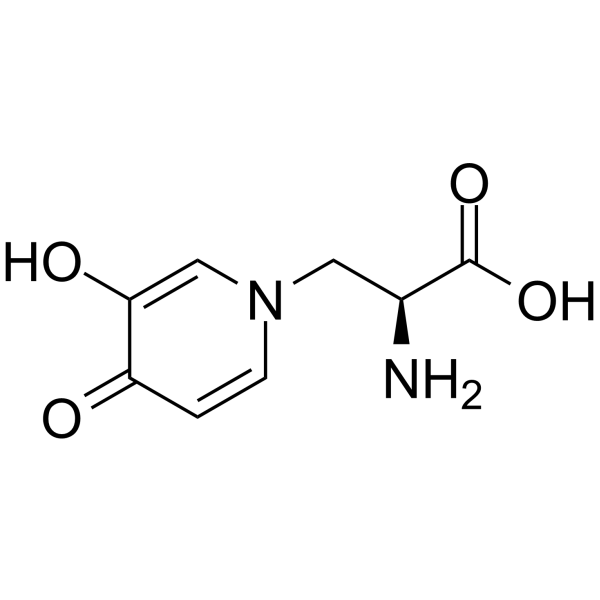Home
Products
Mimosine



| Product Name | Mimosine |
| Price: | Inquiry |
| Catalog No.: | CN00697 |
| CAS No.: | 500-44-7 |
| Molecular Formula: | C8H10N2O4 |
| Molecular Weight: | 198.2 g/mol |
| Purity: | >=98% |
| Type of Compound: | Alkaloids |
| Physical Desc.: | Powder |
| Source: | The seeds of Koa hoale |
| Solvent: | DMSO, TFA, etc. |
| SMILES: | OC(=O)[C@H](Cn1ccc(=O)c(c1)O)N |
| Contact us | |
|---|---|
| First Name: | |
| Last Name: | |
| E-mail: | |
| Question: | |
| Description | Mimosine, a tyrosine analog , can act as an antioxidant by its potent iron-binding activity[1]. Mimosine is a known chelator of Fe(III)[2]. Mimosine induces apoptosis through metal ion chelation, mitochondrial activation and ROS production in human leukemic cells[3]. Anti-cancer, antiinflammation. |
| In Vitro | Mimosine, a known chelator of Fe(III), may facilitate Fe(III) uptake in leucaena by serving as a phytosiderophore[2]. Mimosine, a bidentate iron-binding ligand, may also play a role in cellular translocation of iron within leucaena[2]. Mimosine is a toxic nonprotein amino acid that is a major constituent of the tropical legumesLeucaenaandMimosa[4]. Mimosine (400 μM), through iron chelation, reversibly blocks cell cycle progression in MDA-MB-453 human breast cancer cells[4]. Mimosine (400 μM) reduces DNA synthesis by greater than 90% of control within 4 hr of treatment, and suppresses total proline-directed protein kinase activity to less than 10% of control after 16 hr treatment[4]. |
| In Vivo | Mimosine (30, and 60 mg/kg) decreases sperm concentration[5]. Animal Model: ICR male mice (6-8 weeks)[5] Dosage: 15, 30, or 60 mg/kg Administration: Injected (i.p.) for 7 consecutive days Result: Could significantly reduce sperm concentration as compared to the control or low dose mimosine group (15 mg/kg) at doses of 30 and 60 mg/kg. |
| Density | 1.544g/cm3 |
| Boiling Point | 428.6ºC at 760mmHg |
| Flash Point | 213ºC |
| Exact Mass | 198.06400 |
| PSA | 105.55000 |
| Storage condition | 2-8C |